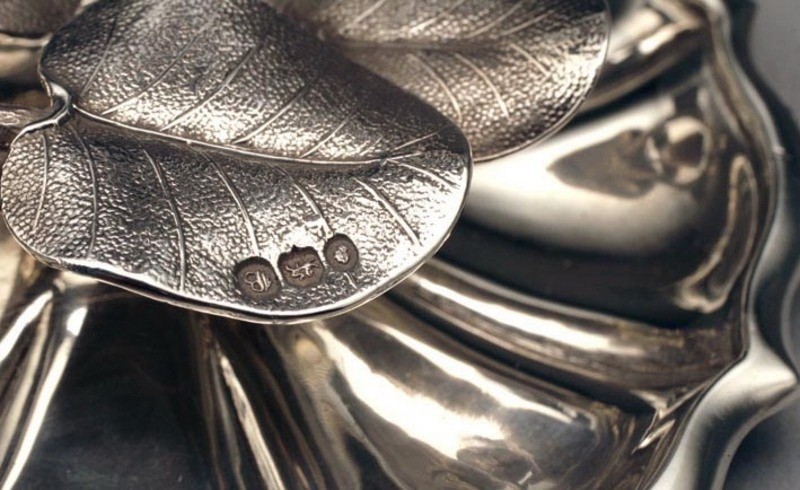Meet Chiara Scotto Foscarini
Antique Silver
Koopman Rare Art
MA Art Business, London, 2009 | Decorative Art & Design Semester Program, London, 2014
What is your favorite part about working in the art world?
The most fascinating thing about the art world to me is the fact that it allows people to have many different approaches, based on their preferred angle of observation. I have the privilege to be involved in several different projects with big museums and public institutions, with important private dealers and auction houses and with scholars and academics. Even when all these different categories of professionals are put in front of the same object, their approaches are completely different and, in my view, they are all necessary to achieve a full understanding of any work of art.
What is the biggest risk you have ever taken?
In 2013 I was working for a contemporary art gallery, managing sales as well as exhibitions and other side projects. After several years of working with various galleries in the same field and in similar roles, I was accustomed to the dynamics of the contemporary art world and market. One day, out of the blue, the director of the gallery explained to me his decision to close the space due to his need to relocate in the countryside to be closer with his family. That day I found myself panicking at the idea of starting a similar job somewhere else. But I also realized that dealing and managing contemporary art was not making me happy anymore. I decided it was time to invest in myself and go back to what really made me proud and excited: researching and dealing in antique silver. It is a relatively unusual field for young people to be involved in but to me it felt like a magical and fascinating world. I therefore went back to Sotheby's Institute for a semester course in Decorative Arts and was inspired to build a new career for myself.
What was the first artwork to have an impact on you?
I think that the fact that I grew up in Rome, Italy, played an essential role in my relationship with art. To me art is all about the way in which the contrast between dramatic sceneries and beauty enriches our life everyday, bringing comfort in difficult times or challenging our perception of things. Bernini’s fountains in Piazza Navona never cease to amaze me, reminding me of my carefree childhood but also of the majestic Baroque period and its ostentations.
What artwork stays with you?
The Pinacoteca in Siena displays one of my favorite works of art: the Miracles of Saint Agostino Novello by Simone Martini, 1320. Medieval art, in my opinion, retains an incredible ability that is in fact the essence of all art: the capacity of combining surreal (almost abstract) scenes with very profound and solemn messages. Simone Martini’s characters are immersed in unreal sceneries, distant from any time and space thanks to their gold backgrounds, yet the gravitas they inspire appeals to all of us in an incredibly modern way.
What advice do you have for students entering Sotheby's Institute?
I would push a younger version of myself to make the most of the incredible number of contacts and activities offered by the Institute. Your classmates are your first network in the art world and all of them have a different background and different areas of interest and expertise: make the most of it! Do not be intimidated by the auction house experts and the museum curators you will meet just because you are starting your path. They have been there too and often have precious advice to give.
What Sotheby's Institute class or instructor influenced you most?
I was particularly lucky to have encountered Professor Lis Bogdan during my semester course in Decorative Arts. Not only did her lectures provide me with a great knowledge on single objects but her incredible passion also communicated to us a true understanding of the atmosphere of the periods we studied. Her generosity goes beyond words, pushing students to pursue the career they are enthusiastic about, putting them in touch with relevant institutions, supporting their growth with encouraging ideas and impartial advice. This type of generosity is not to be taken for granted, not even in the academic field.
What was the last exhibition you saw?
Ocean Liners: Speed and Style at the Victoria & Albert Museum. I think I decided to become an art historian the first time I walked into the Victoria and Albert Museum. I was eight years old and my mum brought me to see the Morris rooms and the Arts and Craft collections. Twenty five years have passed and nowadays I spend several days every week at the V&A for work and research but I am still amazed by the infinite ability of the curators and their modern approach. I found the Ocean Liners exhibition incredibly powerful in recreating the lavish atmosphere of the cruises of the early 20th century. The different medias used, the multifaceted way in which the environments are re created and the right amount of historic information, all contribute to an immersive experience that truly transports visitors into that gilttering age.
Where is the art market headed?
I recently had the privilege to work in Maastricht during TEFAF art fair. It was an incredible opportunity to experience the state of the art market first hand. I was pleasantly surprised to see a growing number of young collectors directing their attention to antiques and decorative arts too. Antique porcelain, silver and furniture are starting to compete again with modern art as the younger generation appreciates contrasts in their homes and collections, mixing modern designer pieces with important and more traditional decorative art investment objects.
